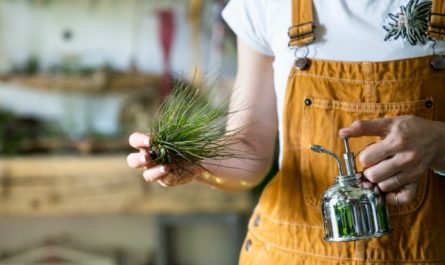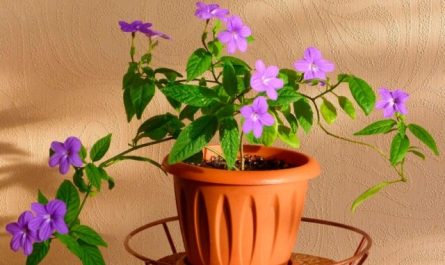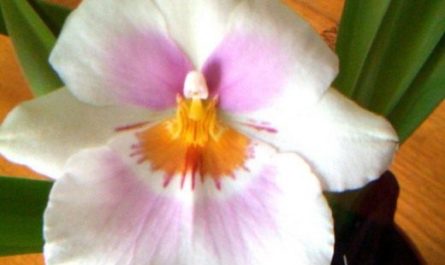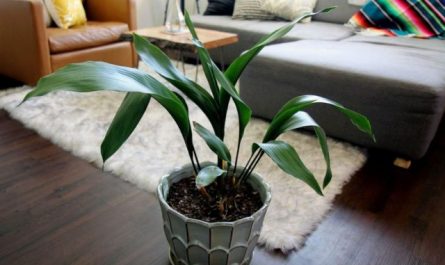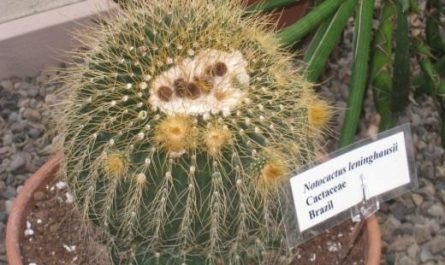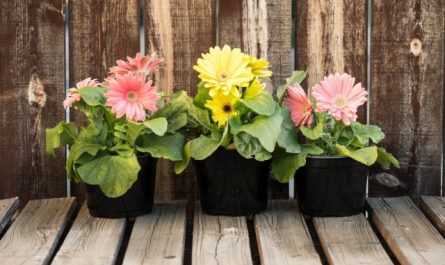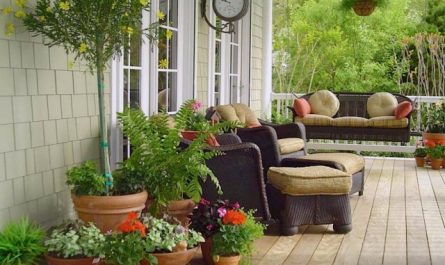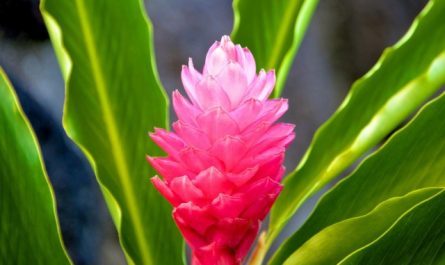It is impossible to confuse the Chestnut Spermum with any other indoor plant. The unusual growth from a huge bean, odd-pinnate wavy shiny leaves and the status of a rare and valuable plant are very attractive to experienced gardeners. At a young age, the Chestnut Spermum looks very bright and original, but over time it reveals its special character of a giant and sooner or later becomes too large for living rooms. And it is not so easy to preserve the plant even for several years. How to grow an indoor chestnut, I will tell you in my article.

Description of the plant
Chestnutspermums are perceived as large trees both in appearance and in size. And they surprise with their belonging to the legume family. In the genus Chestnutspermums there is only one plant, but it is very original.
Chestnut seed, indoor chestnut, chestnut tree, Castanospermum australis, or south we call it. And all over the world this plant is known as Australian, or black chestnut и black beans (Castanospermum australe). This is an evergreen giant tree with powerful roots and smooth, shiny bark that loses its green tone only at a considerable age.
Straight, slender and amazingly thin shoots, capable of supporting a huge mass of leaves, grow from a giant green bean, which remains above the soil surface for a long time. In this, the chestnutspermums are somewhat reminiscent of indoor avocado, but they grow more slowly and look more interesting.
If in their homeland, Australia, these giants easily grow up to 35 m, then castanosmermums in rooms do not grow higher than 2 m, by which time they usually get very sick and wither. To enhance the effect, most often 3 plants are planted in one pot. After all, a single “stick” with simple leaves does not look attractive enough for sale.
After purchase, castanospermums can be either divided or further grown in a group. The uniqueness of castanospermums is in the almost identical color of the bean remaining on the surface, leaves and shoots, which together produce an unforgettable “glossy” impression.
This plant has odd-pinnate, opposite leaves that look like twigs with 5-17 huge individual leaflets. Castanospermum deceives with its greenery no less than with its growth form. The leaf lobes are oval with pointed tips, bright dark green, glossy, up to 15 cm long with half the width. The wavy edges only emphasize how beautifully the leaves shine and how flawless they look.
Fruiting of chestnutspermums quickly puts all the deceptive features of appearance in place and clarifies the belonging to legumes, but, unfortunately, in indoor conditions you will not admire the pod fruits with huge beans. Indoor chestnuts do not bloom, you can appreciate the very beautiful inflorescences, dense, up to 34 cm in length, consisting of yellow-orange-reddish butterfly flowers, only in natural conditions.
The fruits are spongy cylindrical pods up to 25 cm long and 6 cm in diameter. They contain dark seeds up to 3,5 cm in size, somewhat reminiscent of green chestnuts. Edible seeds, after complex processing and grinding, have been one of the most valuable food crops of the aborigines of Australia and Oceania for many thousands of years.

Growing conditions for indoor castanospermum
The key to preserving castanospermum for at least a few years before it loses its compactness is good lighting. Its requirements are “Australian”, so the plant often suffers in indoor conditions.
Lighting and placement
The location for this Australian should be as bright as possible, but without direct sunlight. In summer, midday rays leave scar-like burns on the leaves, which spoil the whole impression of the plant. Chestnutspermum grows well on eastern and western windows, can be accustomed to light partial shade and distance from the window (no further than 1 m). But usually, the older it is, the more light it requires and the more it suffers even at a southern window.
In winter, the Chestnut Spermum will not refuse the sunniest place in the house or additional lighting, it can partially lose leaves due to lack of light. And it always stretches faster, with age it gets sick more often.
Temperature conditions and ventilation
Chestnutspermums are very heat-loving plants. And, perhaps, the temperature of living rooms is the only thing that suits them perfectly in our homes. This plant does not tolerate a temperature drop below 12 degrees even in winter, 10 degrees are fatal. It is safest to keep chestnutspermum all year round in conditions warmer than +15 degrees. In summer, it is preferable to keep it at temperatures above +21 degrees.
In summer, you can take castanospermum outdoors with night temperature control. The plant is not afraid of drafts only in summer.

Caring for indoor chestnut at home
Demanding of hygiene no less than of lighting, castanospermum pleasantly surprises with simpler requirements for watering. It does not like extremes, but in general requires standard regular care.
Watering and air humidity
Castanospermum is watered abundantly, but without stagnant water. It survives droughts, but short ones, dampness is more dangerous for it. It is better to let only 1-2 cm of soil on top of the substrate dry out between waterings, but immediately drain excess water from the tray. In winter, watering is reduced by half.
The plant will not refuse constant high air humidity. Castanospermum retains its “shiny” appearance at rates above 60%. Frequent spraying or humidifiers (trays or devices) will allow you to create ideal conditions for this exotic.
Chestnutspermum loves showers, the leaves need to be kept impeccably clean. Only very warm, soft water is suitable for Chestnutspermum.
Top dressing and fertilizer composition
Feeding is not needed for the chestnut-spermum in the first months at all: the huge beans “supply” the plant with everything it needs. But adult trees need frequent feeding from the moment when the cotyledons separate from the trunks and wrinkle, during the period of active growth, from early spring to mid-autumn.
To meet the nutritional needs of this legume, it is best to apply fertilizers weekly at the manufacturer’s recommended dosage. Humic and other general-purpose organic fertilizers are preferred.

Pruning and shaping of castanospermum
The only method of containing chestnutspermums is pinching the tops of plants that are losing their compactness. Dry, damaged leaves can be trimmed partially and as needed.
Transplantation, containers and substrate
The powerful roots of castanospermum require tall, spacious containers with good drainage holes and a high drainage layer at the bottom. Castanospermum is transplanted only after separating the cotyledons of the bean, keeping the earth ball intact, in early spring, focusing on the beginning of active growth. Do not transplant the plant if its roots have not completely entwined the earth ball, since this exotic plant reacts very painfully to transplantation.
Any substrate will do for the chestnutspermum, as long as it has a loose enough texture and a neutral or slightly acidic reaction. The ideal substrate is for palms, ficuses or tub plants, a universal soil mixture of compost, turf and leaf soil and sand in equal parts. If possible, it is better to add loosening agents to the soil – perlite, coconut fiber, sphagnum.
When replanting, the plant’s depth level should remain the same, placing the stem after separating the lobes at the same level as with them. If for some reason the castanospermum is replanted with a bean, you need to be as careful as possible, trying not to touch it or deepen it.
Castanospermum is sensitive to droughts, dry air, immediately reacting with drying of leaf tips, leaf fall and growth disorders. Loss or change of color indicates improper lighting – too weak when pale or too bright when a yellow tint appears. Overcooling causes leaf shedding, and improper fertilizing – growth cessation.
As it ages and is kept in dry air, the chestnut-spermum loses its resistance and often gets sick. This plant mainly suffers from thrips, scale insects, and spider mites. You can fight pests with biological preparations (Aktofit, Aktoverm, Fitoverm, Bionim, etc.), and in case of serious damage, with systemic insecticides (Aktara, Aktellik, etc.). With over-watering, deep planting, and cold, the plant is at risk of rot.

Reproduction of Castanospermum
You can grow Chestnutospermum on your own only from seeds, if you can find them for sale. The beans are kept in warm water for about a day, and then planted, or more precisely, installed vertically on light soil, deepening them to a maximum of ⅕ of their height.
Even at a temperature of 17 to 25 degrees and stable humidity under the cap, you will have to wait a very long time for the sprout to appear: rooting often takes 5-9 months. You can first germinate the bean in perlite or sphagnum.


